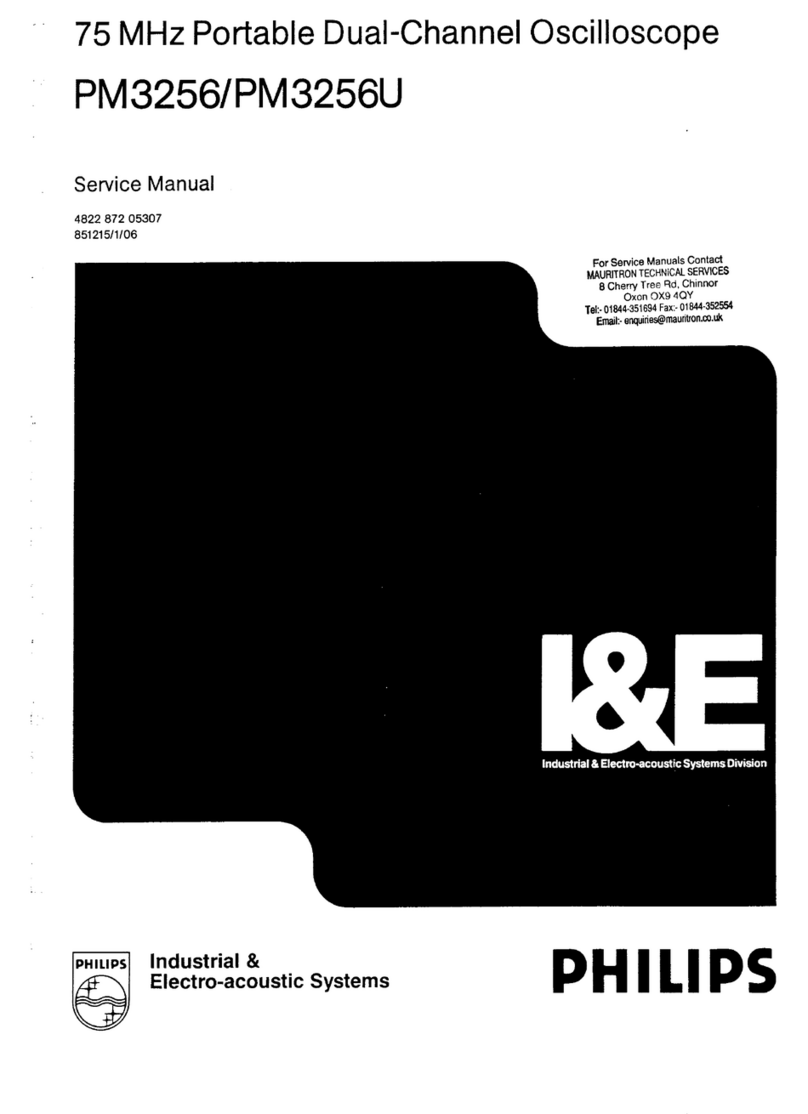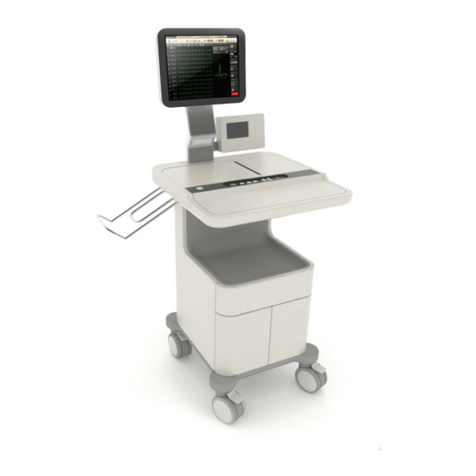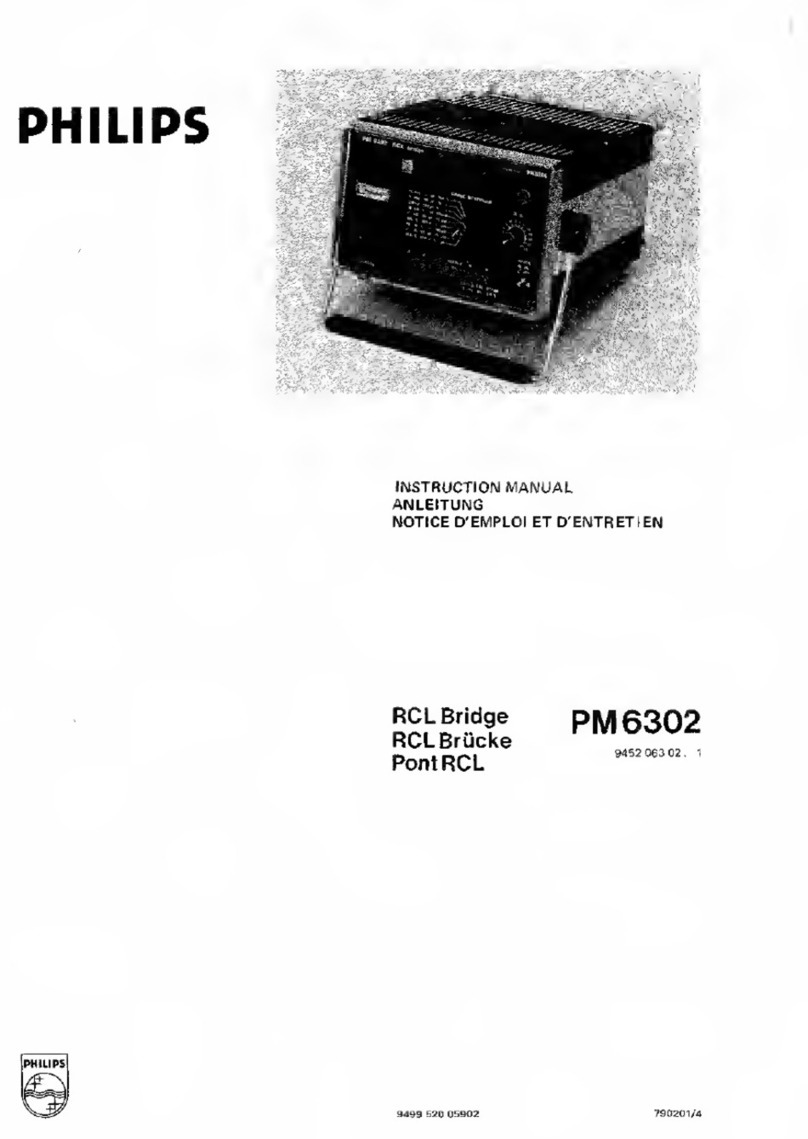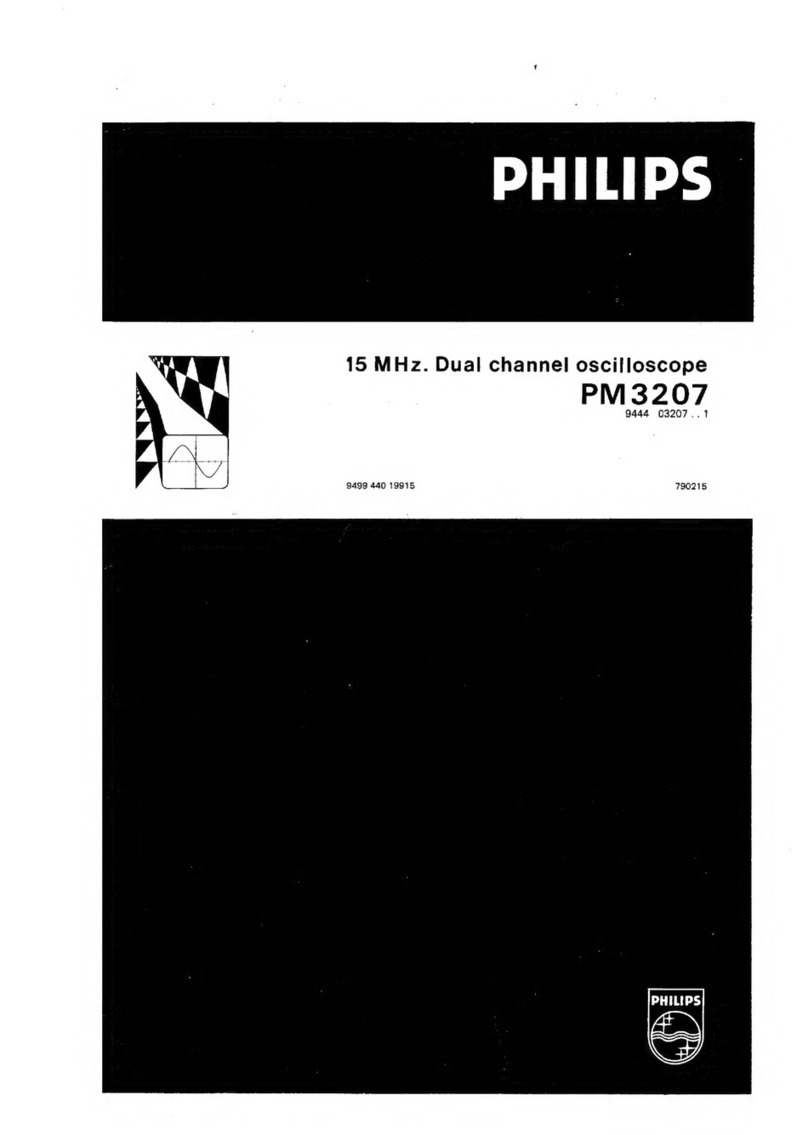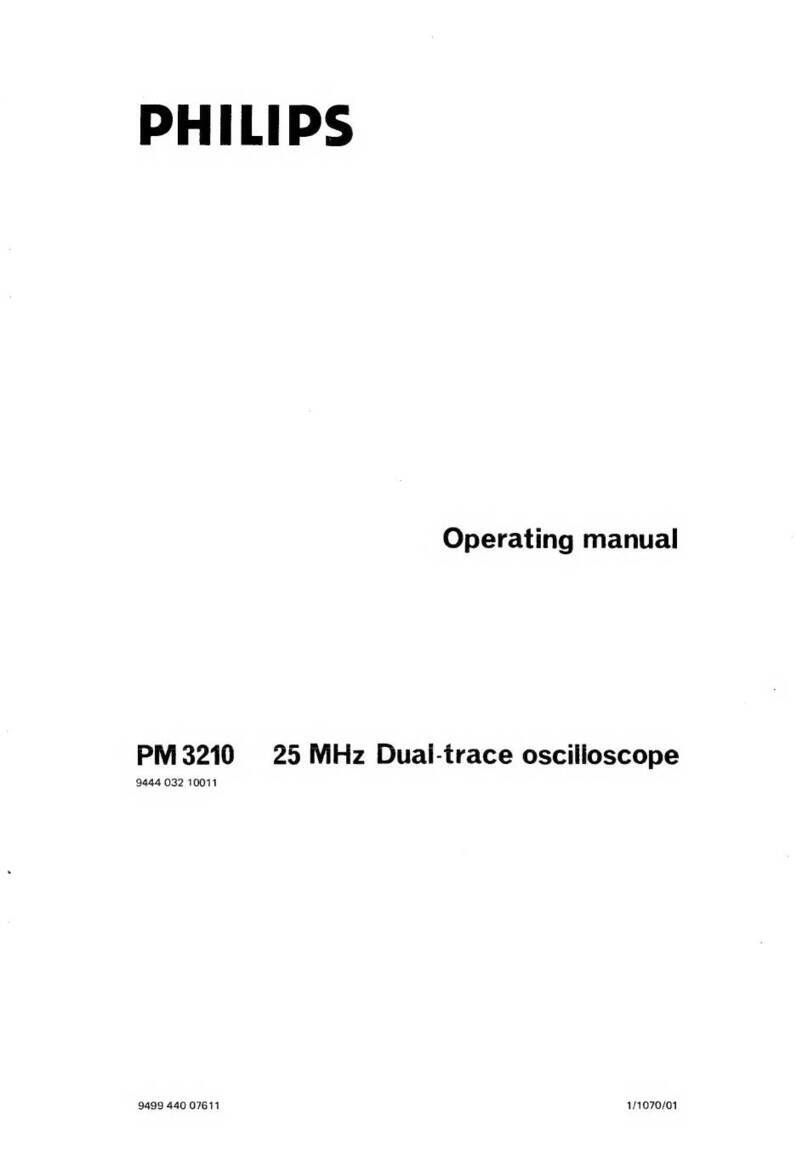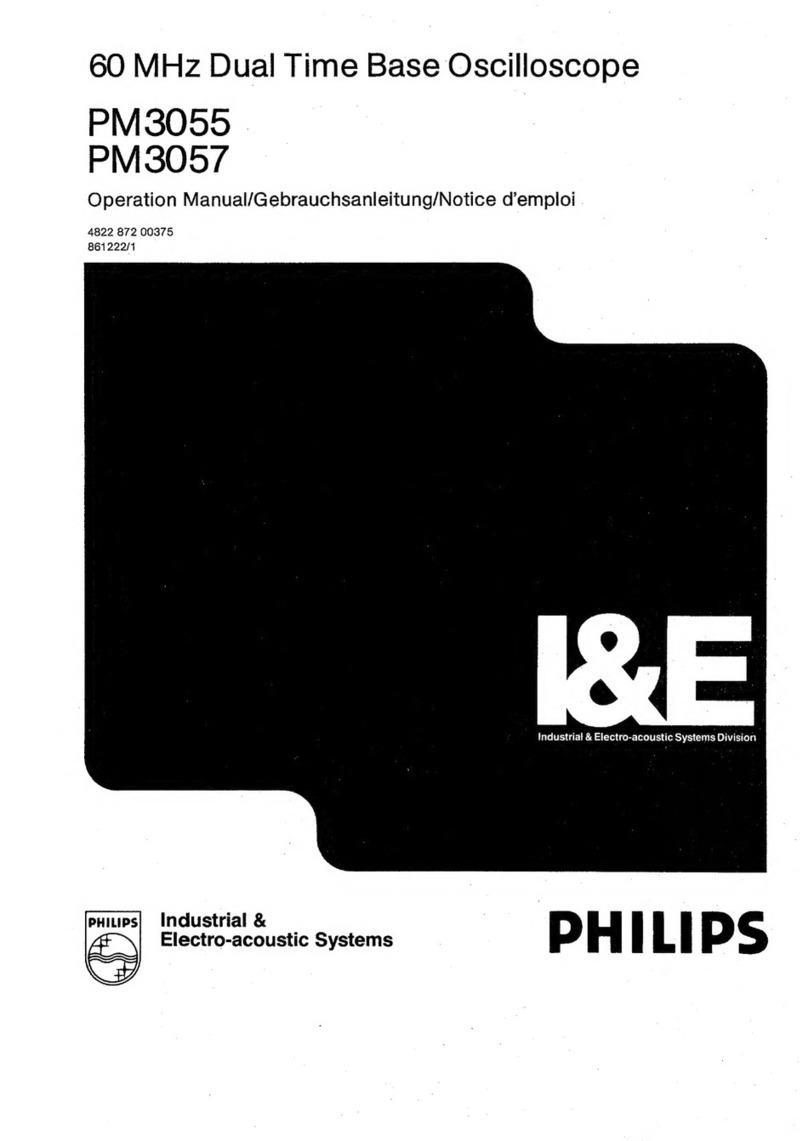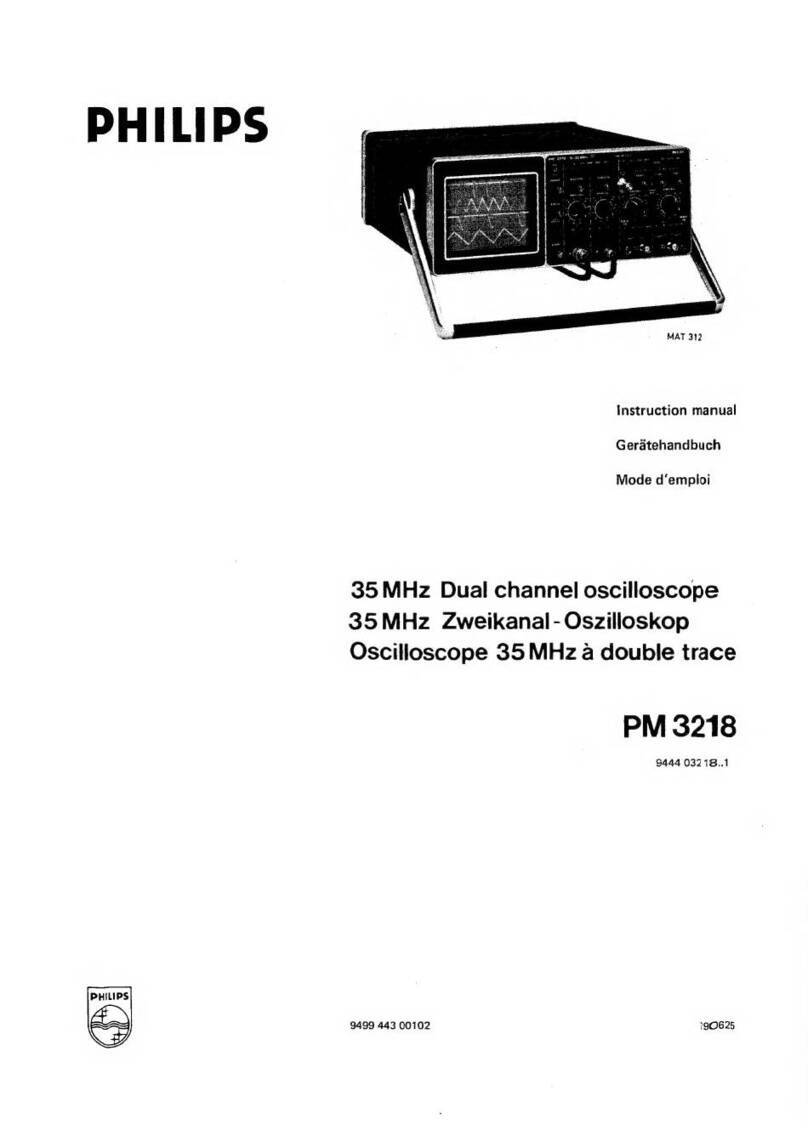3.6. Extra input and outputs
3.6.1. Introduction .^gg
3.6.2. Main time base gate output ^00
3.6.3. Delayed time base gate output .[00
3.7. Maintenance
3.8. Parts lists and diagrams 1g0
3.8.1. Mechanical parts Igg
3.8.2. Electrical parts and diagrams 135
List of figures
Fig. 1.1. Portable dual-trace storage oscilloscope PM 3266 9
Fig. 1.2. Derating of the maximum permissible input voltage as a function of frequency 1
8
Fig. 1.3. Typical trigger sensitivity of channel Aas afunction of frequency 18
Fig.. 2.1. Removing front cover 20
Fig. 2.2. Rear view of the instrument 20
Fig. 2.3. Front view showing controls and sockets 24
Fig. 2.4. Scanning the wave form by means of the LEVEL potentiometer 34
Fig. 3.1. Block diagram 94
Fig. 3.2. Voltage waveforms applied to the storage electrodes of the CRT in the WRITE mode 100
Fig. 3.3. Voltage waveforms applied to the storage electrodes of the CRT in the FAST mode 102
Fig. 3.4. Vertical deflection system 105
Fig. 3.5. Vertical display mode logic 108
Fig. 3.6. Generation of control pulses 110
Fig. 3.7. Main time base trigger circuit 112
Fig. 3.8. Main time base generator 113
Fig. 3.9. Delayed time base trigger circuit 115
Fig. 3.10. Delayed time base generator 117
Fig. 3.11. X-deflection selector and alternate time base logic 118
Fig. 3.12. Final X-amplifier 120
Fig. 3.13. Pushbutton switch decoder truth table 127
Fig. 3.14. Write mode, voltage waveforms applied to storage electrodes 129
Fig. 3.15. Fast mode, voltage waveforms applied to storage electrodes 131
Fig. 3.16. Store mode, voltage waveforms applied to storage electrodes 134
Fig. 3.17. CRT controls trace rotation and geometry 137
Fig. 3.18. Removing the knobs 140
Fig. 3.19. Pushbutton set clamping device 144
Fig. 3.20. Replacing aswitch-segment of apushbutton-set 144
Fig. 3.21. Dimensional drawing of SOT-23 146
Fig. 3.22. Tool for attenuator unit 147
Fig. 3.23. Tool for positioning potentiometer 147
Fig. 3.24. Orthogonality check 165
Fig. 3.25. Geometry check 165
Fig. 3.26. Position of the intensity potentiometer 165
Fig. 3.27. 2:1dummy probe 165
Fig. 3.28. Phase difference in X-Y mode 165
Fig. 3.29. Adjustment of the variable persistence and store mode 166
Fig. 3.30. Adjustments of the fast mode 169
Fig. 3.31. Unit lay-out and adjustment points, bottom view 170
Fig. 3.32. Unit lay-out and adjustment points, top view 171
Fig. 3.33. Input resistance and reactance versus frequency 174
Fig. 3.34. Max. AC component of input voltage as a function of frequency 174
Fig. 3.35. Adjusting C2 of att. probe 175
